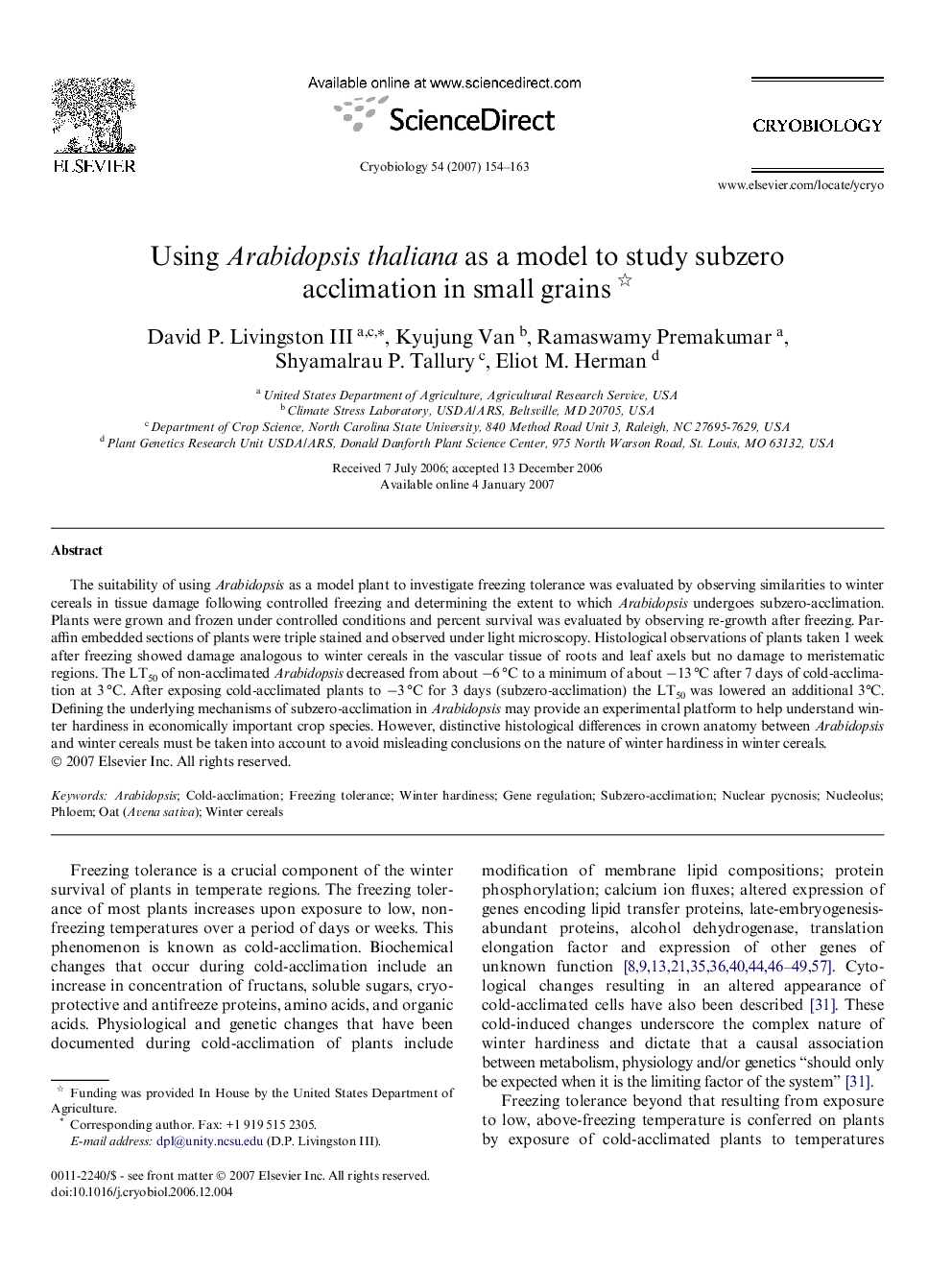| Article ID | Journal | Published Year | Pages | File Type |
|---|---|---|---|---|
| 2169459 | Cryobiology | 2007 | 10 Pages |
The suitability of using Arabidopsis as a model plant to investigate freezing tolerance was evaluated by observing similarities to winter cereals in tissue damage following controlled freezing and determining the extent to which Arabidopsis undergoes subzero-acclimation. Plants were grown and frozen under controlled conditions and percent survival was evaluated by observing re-growth after freezing. Paraffin embedded sections of plants were triple stained and observed under light microscopy. Histological observations of plants taken 1 week after freezing showed damage analogous to winter cereals in the vascular tissue of roots and leaf axels but no damage to meristematic regions. The LT50 of non-acclimated Arabidopsis decreased from about −6 °C to a minimum of about −13 °C after 7 days of cold-acclimation at 3 °C. After exposing cold-acclimated plants to −3 °C for 3 days (subzero-acclimation) the LT50 was lowered an additional 3°C. Defining the underlying mechanisms of subzero-acclimation in Arabidopsis may provide an experimental platform to help understand winter hardiness in economically important crop species. However, distinctive histological differences in crown anatomy between Arabidopsis and winter cereals must be taken into account to avoid misleading conclusions on the nature of winter hardiness in winter cereals.
